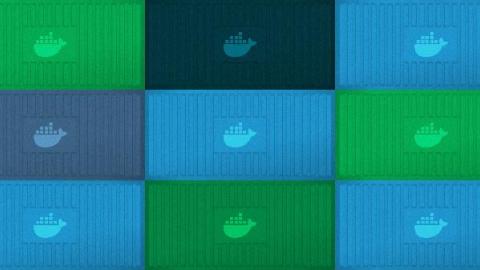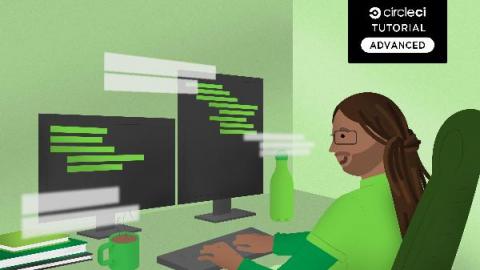Operations | Monitoring | ITSM | DevOps | Cloud
April 2021
Guide to using Docker for your CI/CD pipelines
Docker is a platform for developers and sysadmins to develop, deploy, and run applications using containers. Docker is also referred to as an application packaging tool. This means that enabled applications can be configured and packaged into a Docker image that can be used to spawn Docker containers that run instances of the application. It provides many benefits including runtime environment isolation, consistency via code, and portability.
How to build a CI/CD pipeline with Docker
I talk with many of my fellow engineers at conferences and other events throughout the year. One thing I like demonstrating is how they can implement a continuous integration/continuous deployment (CI/CD) pipeline into a codebase with very little effort. In this post I will walk through some demo code and the CircleCI config that I use in the demonstration. Following these steps will show you how to implement CI/CD pipelines into your code base.
Building CI/CD pipelines using dynamic config
Creating robust, manageable, and reusable functionality is a big part of my job as a CI/CD engineer. Recently, I wrote about managing reusable pipeline configuration by adopting and implementing pipeline variables within pipeline configuration files. As I showed in that tutorial, pipeline variables and orbs have added some flexibility to this process, but they are still a bit limited.
Introducing dynamic config via setup workflows
With the new release of dynamic config via setup workflows, CircleCI customers can now use jobs and workflows, not only to execute work but to determine the work they want to run. We built dynamic config because we know our users want more dynamism in the CircleCI build process. Historically, our platform has been very deterministic: the config is pre-set in a file based on the revision for a given pipeline.
How to deploy an application on Friday
No one likes giving their weekends up to fix release issues. Developers and operations teams are traditionally hesitant to make changes or deploy applications on a Friday, in case something goes wrong and they have to spend their weekend making emergency fixes. Or worse, trying to roll back changes that were made. However, with a strong set of practices and a reliable deployment pipeline, there should be no reason why a deployment cannot happen anytime — even on a Friday afternoon.
Best practices of continuous integration
How to measure the impact of continuous integration
To learn more about continuous integration, visit: https://circleci.com/continuous-integration/
GitOps Use Cases You May Not Have Considered
GitOps is growing in popularity. You’ve probably seen it mentioned on Reddit or dev.to. But what the heck is GitOps? Broadly speaking, GitOps takes the principles of Git and CI-powered workflows favored by software developers — commonly used to automate the process of building, testing and deploying software — and applies them to other business processes.
How should start-ups court software talent?
Foundations: What Is Reusable Configuration?
Continuous integration that you can trust: announcing SOC 2 certification
At CircleCI, we care about security - in 2018, we became the first CI/CD tool to meet the rigorous security and privacy standards required by government agencies to get FedRAMP authorized. Now, CircleCI is SOC 2 certified, adding another industry-recognized security accreditation.
What is YAML? A Beginner's Guide
YAML is a digestible data serialization language that is often utilized to create configuration files and works in concurrence with any programming language. YAML is a data serialization language designed for human interaction. It’s a strict superset of JSON, another data serialization language. But because it’s a strict superset, it can do everything that JSON can and more.
Adding IaC security scans to your CI pipeline
The adoption of Infrastructure as Code(IaC) has skyrocketed in recent years as engineers seek ways to deploy cloud infrastructure faster and more efficiently. IaC refers to the technologies and processes that manage and provision infrastructure using machine-readable languages (code) as opposed to inefficient manual operations.
Deploying infrastructure with an approval job using Terraform
If you are looking for an Infrastructure as Code (IaC) tool, Terraform probably tops your list. In this tutorial, you will learn how to automate the deployment of changes to your infrastructure using Terraform and CircleCI workflows. The workflows will use Approval Jobs. For this project, we will deploy the infrastructure we build to Google Cloud Platform (GCP).
Using Gradle build scans in Android projects
A build scan is a shareable and centralized record of an Android build that provides insights into what happened and why.
CI/CD for Arm-based compute using CircleCI
Go to https://circleci.com/build-environments/arm/ to learn more about CircleCI’s Arm compute and sign up for access.
Looking back at almost a decade of DevOps and forward to what's coming next
TL;DR: This year’s State of DevOps Report is the 10th anniversary edition of this annual research on how practitioners are making DevOps work for them. Whether you’re a big time CircleCI user or are just beginning your career, we want to hear from you. Please take the survey so your voice is represented in the 2021 State of DevOps.






















